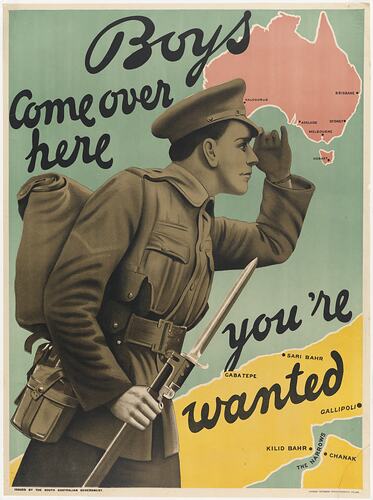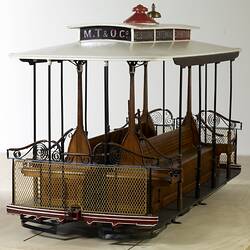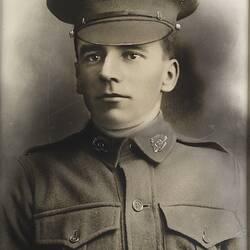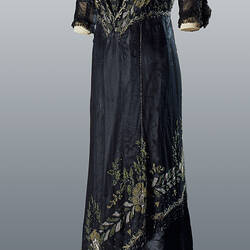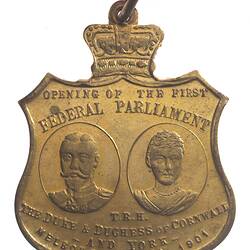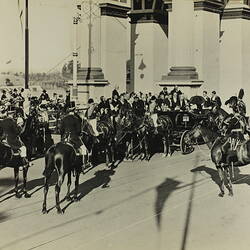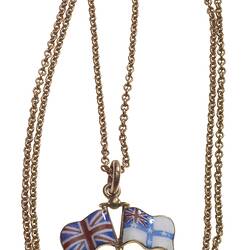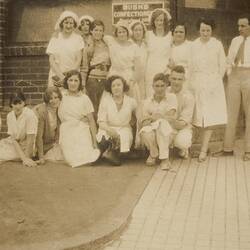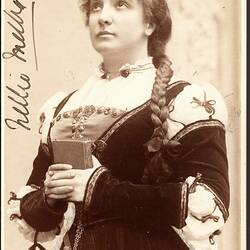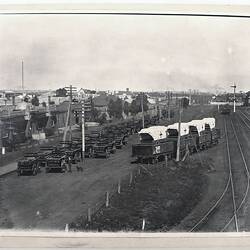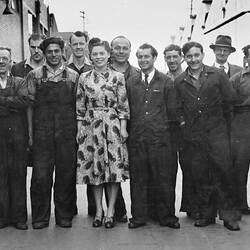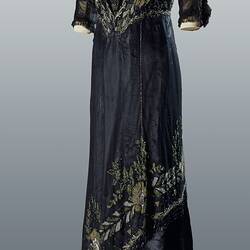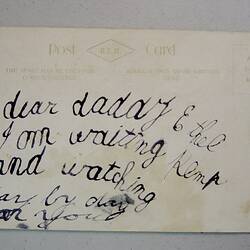Summary
Events that occurred in Melbourne 1900-1920 as outlined in Museums Victoria's Melbourne Story exhibition.
This section of the exhibition explores a twenty year period of momentous change in Melbourne.
It opened on the highest of notes with Melbourne becoming the temporary capital of the newly federated nation, while the search for and building of a permanent national capital took place over the next twenty seven years. It closed on the back of years of trauma and misery, the city (and the nation) reeling from the massive loss of life (60,000 Australians) inflicted by World War I. The intervening years saw a consolidation of a national identity which took many and often contradictory forms. The first act passed by the new federal government, the Immigration Restriction Act (1901) established the legislative basis of the White Australia Policy by restricting the entry of non-European immigrants. This impacted heavily on the large Chinese population of the city. The following year, when Dame Nellie Melba made a triumphant return to her home town as a supreme artist on the world stage, Melburnians rejoiced; at the same time there was an ever stronger desire to embrace and preserve the Australian environment as a symbol of the national identity.
The Sunshine Harvester, the brain child of industrialist H.V. Mckay, lent its name not only to Sunshine, the suburb Mckay created to house his workforce, but also to the landmark legal judgment that created the first basic wage in Australia. In 1908, Victoria became the last of the Australian states to grant women the vote. At the same time, Kew Asylum continued to contain in severely overcrowded circumstances an ever-growing population of individuals with intellectual disabilities, dementia, alcoholism or mental illness.
The city was changing too. New land was opened up for settlement both on the city's outskirts and in rural areas, particularly for returning soldiers.
The return of the soldiers, however, was a mixed blessing, as they brought with them the devastating 'Spanish flu'. The Royal Exhibition Building, which had been the triumphant scene of the first federal Parliament, was now converted to a hospital to deal with the pandemic.
More Information
-
Keywords
Australian Federation (1901), World War I, 1914-1918, Royal Exhibition Building, Great Depression, 1929-1939, immigration, Sunshine Stripper Harvester
-
Localities
-
Authors
Ms Deborah Tout-Smith, Dr Charlotte H. Smith, Dr Moya McFadzean, Ms Liza Dale-Hallett
-
Article types
